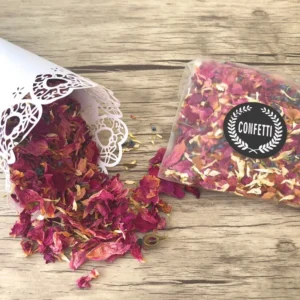Holi, the festival of colors, is a jubilant and exuberant celebration deeply rooted in the cultural tapestry of India. This joyous occasion transcends boundaries, captivating hearts worldwide with its kaleidoscope of colors, contagious enthusiasm, and rich traditions. Alongside the merriment, Holi carries profound spiritual, cultural, and social significance, reflecting the triumph of good over evil, the arrival of spring, and fostering a sense of unity and camaraderie.
Understanding the Essence of Holi:
Holi, derived from the word ‘Holika,’ commemorates the legend of Prahlada and the victory of devotion over malevolence. The festival typically falls in the month of March, marking the end of winter and welcoming the rejuvenating spirit of spring. The eve of Holi, known as Holika Dahan, involves the lighting of bonfires, symbolizing the triumph of virtue over vice.
The Joyous Riot of Colors:
On the day of Holi, streets, courtyards, and parks transform into vibrant canvases. Revelers armed with colored powders and water-filled balloons engage in playful merrymaking, dousing each other in a riot of hues. The exuberance transcends social barriers, as people of all ages, backgrounds, and walks of life come together, spreading laughter and forging bonds over colorful encounters.
Cultural Traditions and Rituals:
Holi is an embodiment of various customs and traditions that vary across regions in India. In Mathura and Vrindavan, the birthplace of Lord Krishna, Holi is celebrated with immense fervor. The playful ‘Lathmar Holi,’ where women playfully beat men with sticks, reenacts the divine love between Krishna and Radha.
The Role of Incense Sticks in Holi Celebrations:
Amidst the vibrant revelry, the aromatic essence of incense sticks wafts through the air, adding a captivating dimension to the festivities. Incense holds cultural significance and is an integral part of various rituals and celebrations, including Holi.
1. Spiritual Significance of Incense:
Incense, known for its fragrant and purifying properties, has a profound spiritual association. During Holi, the burning of incense sticks is a ritualistic practice in temples and households, signifying the removal of negativity and welcoming positivity and auspiciousness.
2. Aromatic Ambiance and Festive Spirit:
Incense sticks, with their diverse fragrances, infuse the atmosphere with a sense of tranquility and festivity. The captivating scents of sandalwood, jasmine, rose, and other aromatic blends heighten the sensory experience, complementing the jubilant aura of Holi. check out holi gift hamper.
Historical and Mythological Roots of Holi:
1. Legend of Prahlada and Holika:
The roots of Holi are entrenched in Hindu mythology, specifically in the tale of Prahlada, a devotee of Lord Vishnu. The story revolves around the malevolent Holika, who perishes in her attempt to harm Prahlada by entering a bonfire. This legend symbolizes the victory of virtue over evil, marking the origin of Holika Dahan.
2. Krishna and Radha’s Playful Holi:
The festival also commemorates the playful and mischievous antics of Lord Krishna, who used to play Holi with his beloved Radha and other gopis (milkmaids) in Vrindavan. The celebration of ‘Lathmar Holi,’ where women playfully hit men with sticks, mirrors the divine love between Krishna and Radha.
Cultural Significance and Regional Variations:
1. Lathmar Holi in Mathura and Vrindavan:
Mathura and Vrindavan, the birthplace and playground of Lord Krishna, witness unique Holi traditions, such as the ‘Lathmar Holi,’ where women playfully beat men with sticks, symbolizing the divine love between Krishna and Radha.
2. Royal Holi in Udaipur and Jaipur:
The regal states of Rajasthan showcase an extravagant ‘Royal Holi,’ where cultural performances, processions, and folk music characterize the festivities.
3. Basant Utsav in West Bengal:
In West Bengal, Holi transforms into ‘Basant Utsav,’ a celebration embedded in Rabindranath Tagore’s legacy, showcasing cultural programs and performances.
Spiritual and Ritualistic Observances:
1. Holika Dahan and Symbolic Bonfires:
Holika Dahan, held on the night before Holi, involves the ceremonial lighting of bonfires, symbolizing the triumph of good over evil. The ritual signifies purification and the eradication of negativity.
2. Gulal, Abir, and Pichkaris:
The use of vibrant colored powders (gulal/abir) and water-filled pichkaris (water guns) forms the crux of Holi revelry, symbolizing the arrival of spring and fostering unity through playful interactions.
The Multifaceted Role of Incense Sticks:
1. Historical Evolution of Incense:
The use of incense spans civilizations and cultures globally, tracing its origins back to ancient Egypt, Mesopotamia, China, and India. The aromatic allure and spiritual significance of incense have endured through centuries.
2. Crafting Incense Sticks:
The art of making incense sticks involves a meticulous process that begins with selecting natural ingredients such as aromatic woods, resins, herbs, and essential oils. Skilled artisans intricately blend these components to create fragrant sticks following traditional recipes.
3. Incense in Religious Ceremonies:
Incense holds a revered place in religious ceremonies across cultures. In Hinduism, the burning of incense during Holi rituals signifies the removal of negativity and invites positivity, sanctifying the environment.
4. Aromatherapeutic Benefits:
Aromatherapy harnesses the therapeutic properties of incense to enhance mental and emotional well-being. The aromatic fragrances of incense, such as sandalwood, lavender, or frankincense, evoke relaxation, reduce stress, and promote a serene ambiance.
Incense Production Methods and Sustainability:
1. Traditional vs. Modern Incense Making:
Traditional incense making involves handcrafted techniques passed down through generations. Conversely, modern methods employ machinery for mass production while aiming to preserve the essence of natural ingredients.
2. Eco-conscious Practices:
In response to growing environmental concerns, the incense industry is increasingly adopting sustainable practices. From using natural and organic ingredients to eco-friendly packaging, efforts are made to minimize the ecological footprint.
The Craftsmanship of Incense Making:
The art of making incense sticks is an ancient tradition that involves a meticulous process. Natural ingredients like aromatic woods, herbs, resins, and essential oils are skillfully blended to create these fragrant sticks. Skilled artisans craft these sticks, often following age-old recipes passed down through generations.
The Influence of Aromatherapy:
Beyond their role in rituals and celebrations, incense sticks are revered for their therapeutic effects. Aromatherapy, based on the use of natural scents to enhance well-being, harnesses the calming and mood-lifting properties of incense, promoting relaxation and stress relief.
Sustainability and Modern Trends:
Contemporary trends advocate for sustainable and eco-friendly practices. In response, the incense industry has witnessed a shift towards using natural, organic materials and adopting eco-conscious manufacturing processes, aligning with environmental concerns and consumer preferences.
Conclusion: Preserving Traditions and Embracing Aromatic Delights
Holi, an exuberant festival steeped in tradition and vibrant colors, evokes a sense of unity, joy, and cultural richness. In its celebration, the aromatic essence of incense sticks adds a layer of sensory delight, infusing the air with captivating fragrances. As we commemorate Holi, let us cherish the age-old traditions, embrace the joy of togetherness, and relish the aromatic delights that accompany this jubilant festival.



